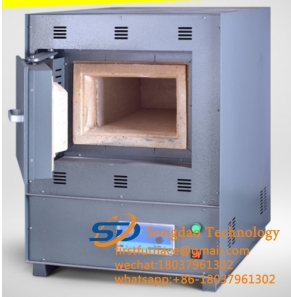- 10
- Nov
Influencing factors and solutions of coal ash measurement error in high-temperature muffle furnace
Influencing factors and solutions of coal ash measurement error in high-temperature muffle furnace
1. How much sulfur is fixed in the ash, and the degree of decomposition of carbonate (mainly calcite). The slow ashing method is used to completely oxidize and discharge the sulfide in the coal before the carbonate is decomposed, avoiding the formation of calcium sulfate.
2. Weighing of coal samples. When weighing samples, it should be accurate and fast, and the sample size should meet the specifications, and should not be too little or too much. Too little sample weight will make the representative of the sample worse, and too much sample will cause the coal sample at the bottom of the ash pan to be too thick, not easy to burn through, and the measured ash content will be higher.
3. Control of heating rate and temperature residence time of high temperature muffle furnace. The initial heating time (reflected in the heating rate) has a greater impact on the accuracy of the ash content measurement. The shorter the heating time (faster rate), the higher the measured ash content; the longer the time, the measured ash content month is close to the standard value. Therefore, before the experiment, the pyrite should be completely oxidized and the carbonate should be completely decomposed.
4. The water absorption of the residue after the coal sample is ashed in the high-temperature muffle furnace. The longer the ash is left in the air, the more moisture in the air will be absorbed by the coal ash, and the result will be higher, resulting in lower accuracy. Therefore, it is necessary to ensure that the environment is stable and up to the standard before the experiment, and the coal ash should not be left outside for too long after being taken out.
- Furnace temperature proofreading. The working temperature in the furnace and the temperature displayed by the instrument are not completely consistent, there are often differences, and sometimes the difference is very large, so special calibration of the working temperature and constant temperature zone in the furnace is required.

